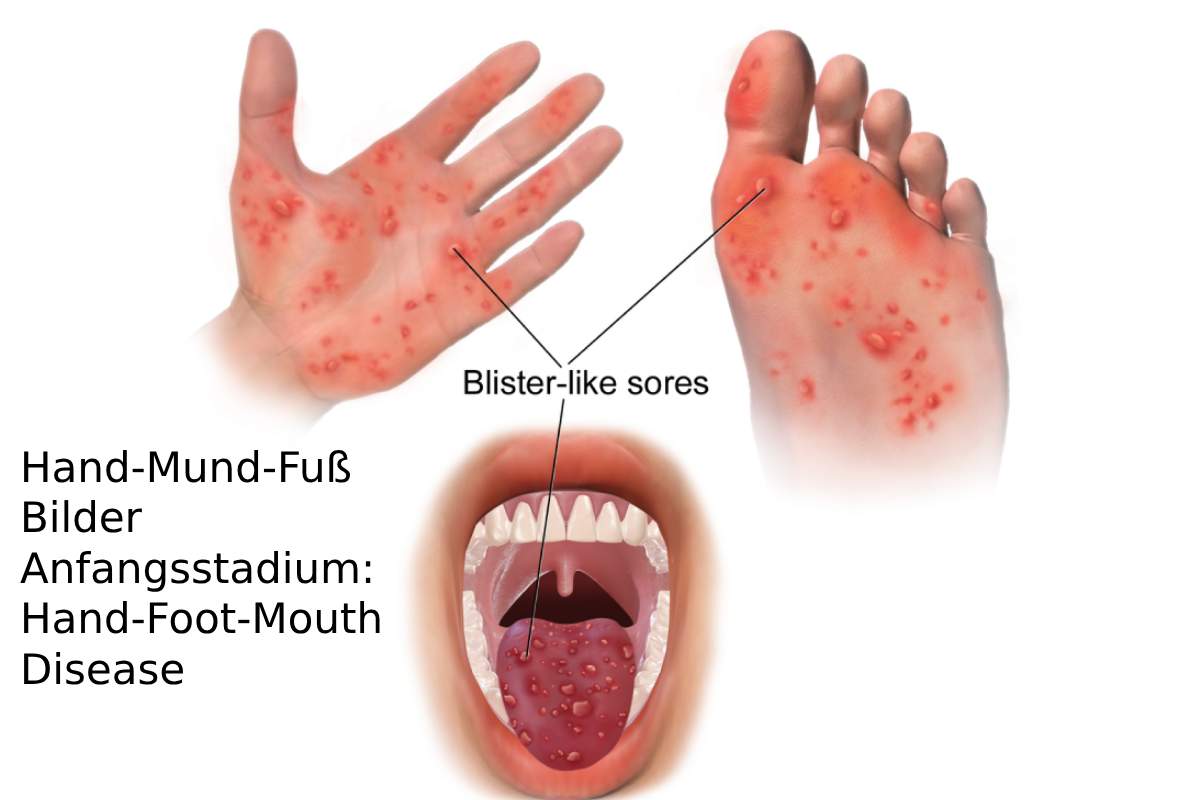Hand-Mund-Fuß Bilder Anfangsstadium is an infectious disease caused by enteroviruses, particularly coxsackie viruses, common among children under 10. However, adults aren’t entirely immune to it either. There is a surge in cases in schools and kindergartens, and the disease is prevalent in public and community centers. The early stages of Hand, foot, and mouth are highly contagious, and detecting a child’s disease is critical.
Table of Contents
Hand-Mund-Fuß Bilder Anfangsstadium Symptoms in the Early Stages
Hand, foot and mouth disease usually begins with flu-like symptoms such as:
- Fever
- Sore throat
- Loss of appetite
- General malaise
Symptoms that are apparent after a day or two include blisters in the mouth, which can be pretty excruciating. In the early stages, these blisters appear as redness and sores on various parts of the body, specifically the tongue, gums, and palate. In some cases, the blisters can also be so painful that the afflicted child finds it difficult to eat or drink.
Hand-Mund-Fuß Bilder Anfangsstadium Spread of the rash
The second phase starts with blisters around the mouth area and then rises and spreads to the hands and feet, known as Hand-Mund-Fuß Bilder Anfangsstadium. The condition can also appear on the knees, elbows, and private regions. During this stage, the chilblains might be in the form of minor red marks or blisters filled with liquid, and incessant itching is a common symptom.
Infection and incubation period
Hand-Mund-Fuß Bilder Anfangsstadium is mainly transmitted by droplet infection via saliva or nasal secretions and by smear infections from contaminated surfaces. The incubation period is usually three to five days but can last up to ten days. The risk of infection is highest during the initial stage.
Treatment and relief of symptoms
There is no specific therapy for Hand-Mund-Fuß Bilder Anfangsstadium, as antibiotics are ineffective against viral infections.
Nevertheless, the following measures can help to alleviate the symptoms:
- Painkillers and fever-reducing medications such as paracetamol
- Cool drinks and soft food to minimize pain when eating
- Antiseptic mouthwashes to relieve mouth pain
- Avoid acidic and spicy foods that could irritate the blisters.
Hand-Mund-Fuß Bilder Anfangsstadium Prevention and hygiene
Since Hand, foot and mouth disease is particularly contagious in the early stages, strict hygiene measures are essential:
- Regular hand washing with soap
- Disinfection of toys and surfaces
- Avoid close contact with infected people.
- Sick children should not go to kindergarten or school until all symptoms have subsided.
Key knowledge and tips regarding Hand, foot, and mouth disease
Infections from the infected are the most contagious during the first week of the infection when the blisters are being formed, especially when the fluids are being leaked from the blisters. In most cases, the infection spreads from one person to another by direct contact and through infected objects and surfaces.
Post-infection, anyone infected with the virus becomes immune to the same Hand, foot, and mouth disease virus. Nonetheless, different strains of enteroviruses do exist and can cause infections, so getting infected again cannot be completely ruled out.
A medical professional should especially do a checkup for children younger than six months who are exhibiting vomiting and dehydration along with signs that are particularly severe or persisting beyond 10 days.
Pediatric patients suffering from Hand, foot, and mouth disease should not be treated with aspirin. It is dangerous as medication can trigger Reye’s syndrome, which can damage the child’s liver and brain.
The disease seems distinct, but it is a misconception since the name suggests that it is associated with the disease that affects livestock, such as cattle, sheep, and pigs.
Conclusion
As the Initial Phase of Hand-Mund-Fuß Bilder shows, it is a common illness arising from childhood, and its early stages suggest it is similar to the flu. The characteristic blisters emerge around the mouth region and eventually spread to the palms and soles of the feet. While the disease is mainly uncomplicated, it can still pose some discomfort. The signs and symptoms of the infection can be managed with efficient containment strategies such as early identification and proper sanitary practices.

